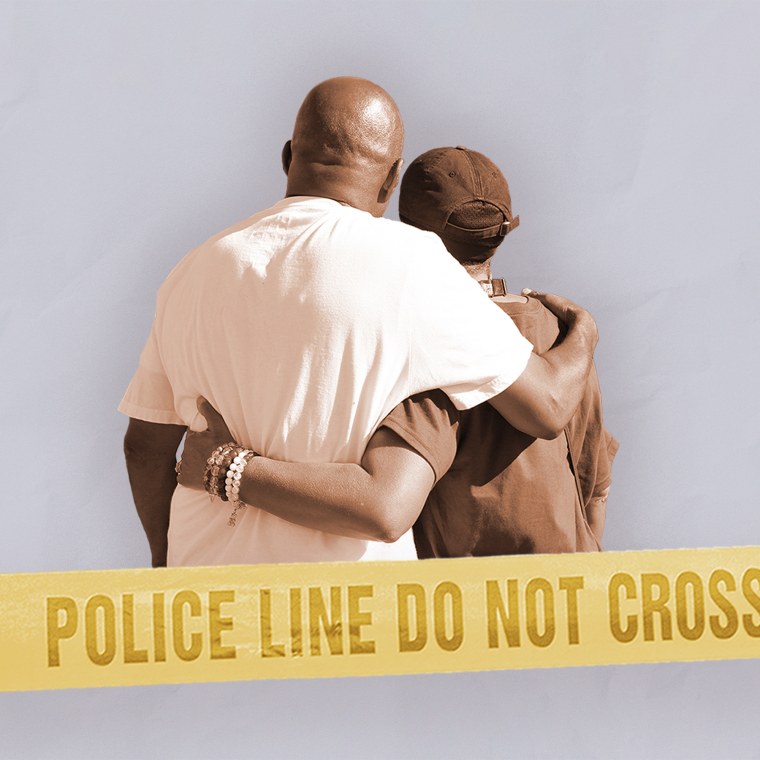Shortly after midnight Friday in downtown Leland, Mississippi, where fans of Leland High School had gathered after that night’s homecoming football game, authorities say multiple people opened fire on a crowd and killed six people and shot or injured 26. On that same night in Rolling Fork, another town in the Mississippi Delta, a person was shot and injured at South Delta High School after a football game there. Also that same night, across the state in Heidelberg, two people (including a pregnant woman) were shot dead and a third person suffered fatal wounds not caused by a gun on the campus of Heidelberg High School the night of its homecoming football game.
They are not anywhere near urban centers. And yet, understanding what’s happening in such places is key to understanding the violence that plagues the United States.
On one level, the three unrelated outbursts of gunfire validate reports that Friday night football is becoming increasingly associated with gun violence, but the shootings and killings are also a reminder of how much rural gunfire is contributing to the country’s overall gun violence epidemic. Leland is home to about 3,700 people; Rolling Fork to about 1,500 and Heidelberg to about 700. They are not urban centers or anywhere near urban centers. And yet, understanding what’s happening in such places is key to understanding the gun violence that plagues the United States.
Nick Wilson, who works as the senior director of gun violence prevention for the Center for American Progress (CAP), told me Tuesday, “Even for me, it was very surprising to see just how much Mississippi and other kind of more rural places top the list” of places with the worst gun homicide rates. Wilson was referring to a list CAP put together using data from hospitals and the Centers for Disease Control and Prevention. The left-leaning think tank found that of the 20 U.S. counties with the highest “annualized gun homicide rate” between 2021 and 2024, 11 counties are rural. Mississippi counties account for eight of the top 20 and five of the top 10. On that list is Washington County, where six people were killed in Leland on Friday night.

Wilson also noted that sociologist James Tuttle uses “Murder Valley” to describe an area of 21 contiguous counties that includes the cities of Memphis, Tennessee, and Jackson, Mississippi, and much of the Arkansas Delta and Mississippi Delta. If the area were its own nation, Tuttle writes, it would have the fifth-highest homicide rate in the world: better than Saint Vincent and the Grenadines and Haiti, which are ranked 6th and 7th, but worse than Ecuador and South Africa, which are ranked 3rd and 4th.
“We talk so much about Illinois,” Wilson said, “and Trump sending the National Guard to Chicago, but Mississippi’s homicide rate is twice that of Illinois.”
The day after Friday night’s massacre, Leland Mayor John Lee was quoted as saying that Leland is not a “high crime” area. “We all get along,” he said, “and everybody knows everybody. So this is definitely a tragedy to us.”
It’s hard to square the mayor’s sanguine view of Leland as a place where everybody gets along with CAP’s finding that between 2021 and 2024, Washington County had the second highest per capita gun homicide rate in the United States.
James Tuttle uses 'Murder Valley' to describe an area of 21 contiguous counties that includes the cities of Memphis, Tennessee, and Jackson, Mississippi, and much of the Arkansas Delta and Mississippi Delta.
The FBI’s crime-tracker website hasn’t included any data from the Leland Police Department in more than 10 years, and the Clarion Ledger reported in February that 60% of law enforcement agencies in Mississippi hadn’t even been reporting their crime data to the state. So there are no crime data figures to refute the mayor’s claim.
But even if, by some miracle, Leland had stood out as some kind of exception in Washington County, after Friday night, it’s not an exception anymore.
In the Leland case, four people are known to have been booked on capital murder charges, and one person is known to have been booked on an attempted murder charge. Thursday, authorities said four more people had been arrested, but their names and alleged crimes had not been released. Two people were arrested Saturday in connection with the shooting in Rolling Fork, and by Wednesday, five teenagers and a minor whose name and age weren't released had been arrested in connection with the Heidelberg shootings.
Fred Womack, who founded an organization in Jackson called Operation Good, whose mission includes reducing recidivism and training people for jobs, has dedicated himself to trying to disrupt violence; that is, to keep one violent crime from leading to a retaliatory violent crime. He said Tuesday that he often reminds his colleagues in other parts of the country that “what they go through don’t even compare to what we have to go through in the South. Because in the South, guns is like having a bottle of water [sic]. Everybody got it. And then it’s a right-to-carry state. It’s a castle doctrine state. It’s constant gun shows every other week in Mississippi somewhere. So guns are just bloody in Mississippi.”
Wilson similarly said, “The fact that you can carry a gun without a permit anywhere you go, it turns these small disputes that happen” into something deadly.
It’s well documented that homicide rates have been falling across America’s big cities. That’s one of the reasons that Trump deploying the National Guard to Washington and threatening other cities with troops is so problematic. But while some of the cities where Trump is sending troops are “the safest they’ve been since the 1960s,” Wilson said, “in these kind of deeper South regions, they’re not benefiting from the same crime declines. And it appears that crime isn’t declining, and it’s an outlier for the rest of the country.”
These deeper South regions, they’re not benefiting from the same crime declines.
Nick Wilson, Center for American Progress
Consider that between 2021 and 2024, CAP listed St. Louis County, Missouri, as having the highest gun homicide rate in the country. But when looking at 2024 alone, deeply rural Holmes County, Mississippi (which is two counties over from Washington County) has the highest rate.
The gun violence problem is improving in Jackson, Womack pointed out, and he said that he had been trying to get officials to fund an expansion of his violence disruption work into rural areas, especially the Delta — but to no avail. Though everybody should have been disturbed by the Friday night football gun deaths across Mississippi, Womack may have been the least surprised.
He said, “Get us all together. You bring in alcohol. Then you bring in all the crazy drugs they got these days, and you got a state where everybody got at least 10 guns. What you asked for? You asked for violence.”

